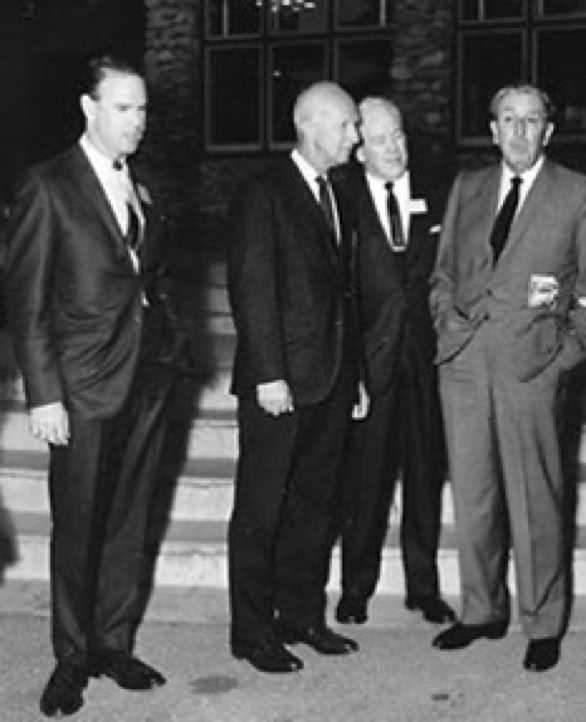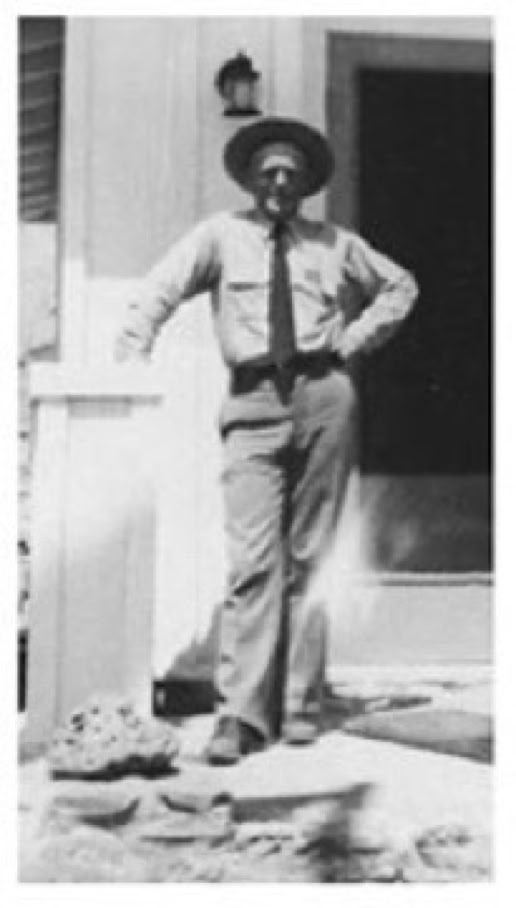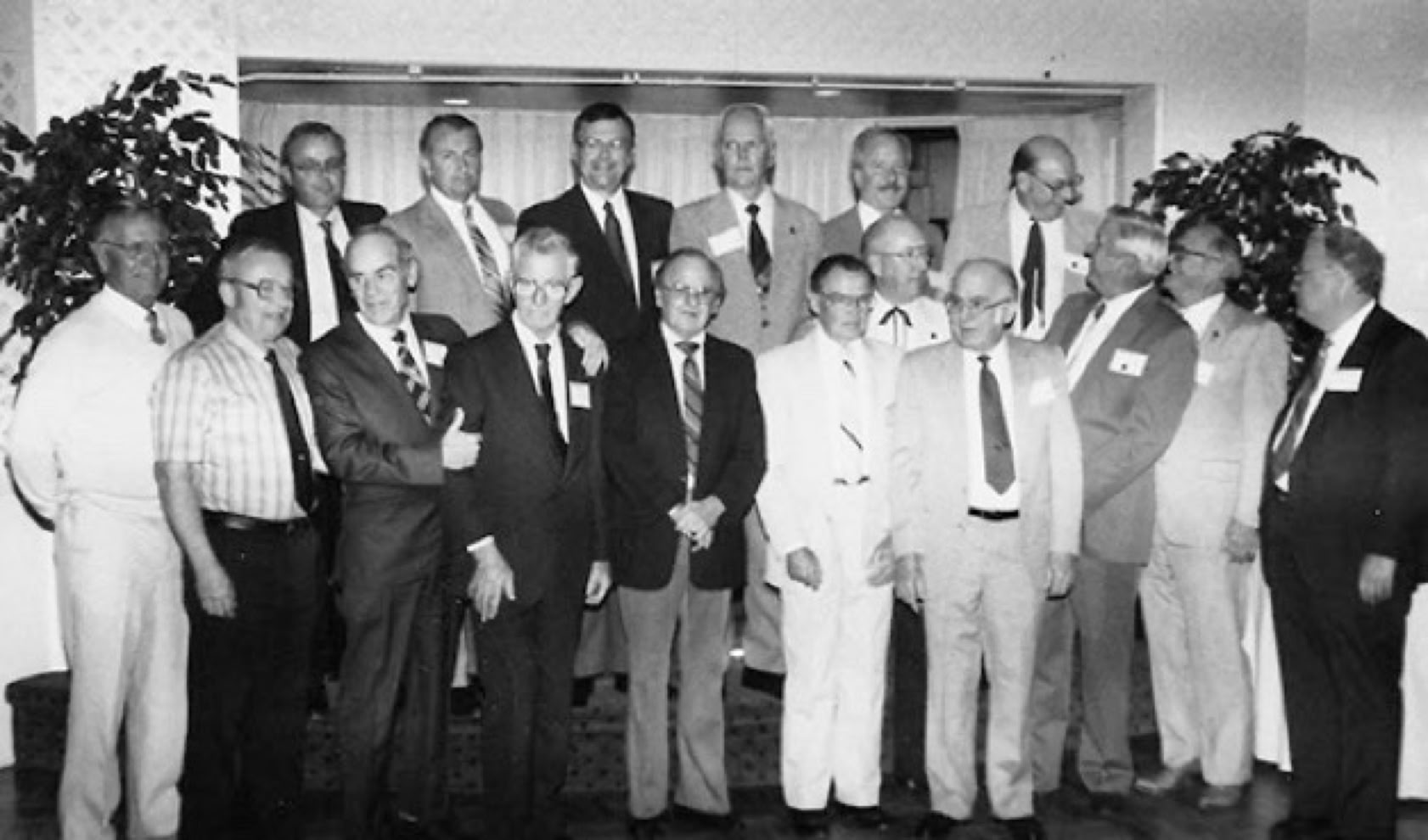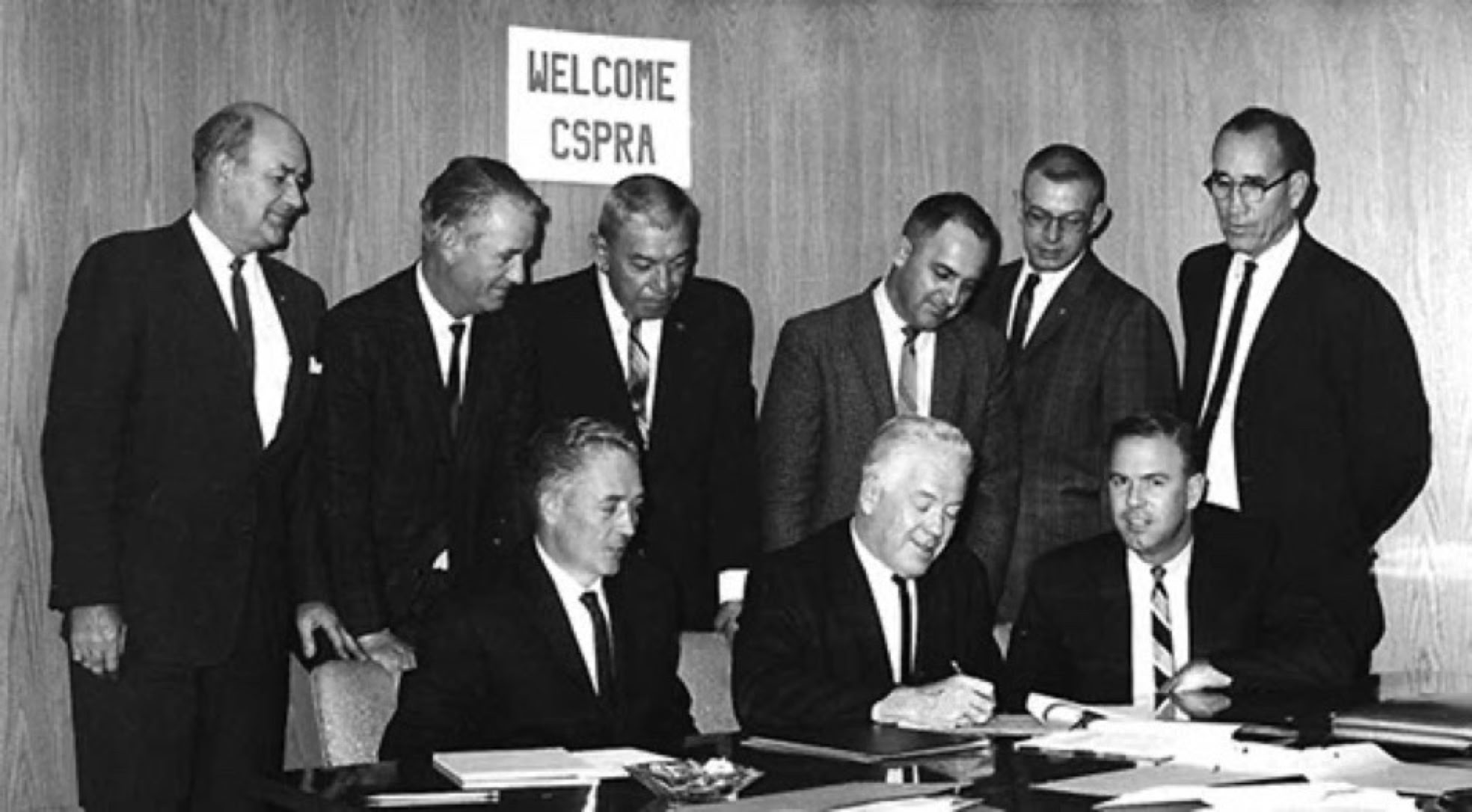

California State Park
Rangers Association
CSPRA History
drafted by Doug Bryce 1998, updated by Jeff Price 2014 and 2021
CSPRA President Lewis Paul Griffith signing organizational start up documents with founding 1964 Officers and Directors. CSPRA Photo
The idea for an organization like CSPRA had been discussed privately or in small groups around the state for several years in the early 1960s, ever since a new law created the Department of Parks and Recreation. The first revelation that an organization was not only possible but already well under way, was unveiled at at a statewide park supervisors' meeting held at Columbia State Historic Park, in the fall of 1964.
Behind the scenes, well before the idea was rolled out at the Columbia meeting, one man's concept for a ranger organization began to take shape months earlier. Ranger Lewis Paul Griffith (26 Feb 1917 to 11 Oct 1990), known best as Paul Griffith, was the driving force to establish CSPRA. Paul was known to be outgoing, gregarious, cordial, well-spoken, and one who really seemed to enjoy dealing with politics; he was the perfect person to organize Park Rangers and eventually serve as the first elected president for CSPRA.
Paul visited the Operations Chief in Sacramento, explained his organizational concept for a better trained, uniformed and equipped Ranger force in the future, and got his blessing to explore the idea and move ahead with organization. He also shared his idea with Division Chief Earl Hanson, and received a positive response. Paul then met with organizers in the California State Employees Association (CSEA) in Sacramento and sold them on the idea.
It was decided that an organization was needed to represent the statewide interests of Park Rangers to management and the state. On November 4, 1964, CSPRA held its first meeting of newly elected officers and directors under the guidance of President Lewis Paul Griffith. In the fall of 1965 the first annual conference was held at Asilomar. In 1967, CSPRA was incorporated as a professional organization and two years later, was recognized by the state as an authorized representative of its members.
At that 1964 statewide park supervisors' meeting in Columbia, member Doug Bryce recalls a disconcerting item not on the agenda was creating quite a heated discussion. A State Park Commissioner from Oceanside, Karl Wray, was lobbying the Department at that time to have Rangers in period dress, rather than the identifiable Ranger uniform, in historic units such as Columbia. Opposition to that idea, and clearly seeing the need for Park Rangers to have a representative voice on park issues, sparked an agreement to establish the California State Park Rangers Association. Being able to explain his prior organizational groundwork and promised pro bono administrative support, made the discussion at Columbia a perfect time for Paul to unveil his ideas.
The California State Employees Association agreed to help with governing documents, assist with incorporation as a certified association to represent Rangers. CSEA even agreed to provide the services of a staff attorney, Phil Geiger, to serve as executive secretary and guide the new organization as it got started. In 1964, CSPRA became the first Ranger organization in the nation.
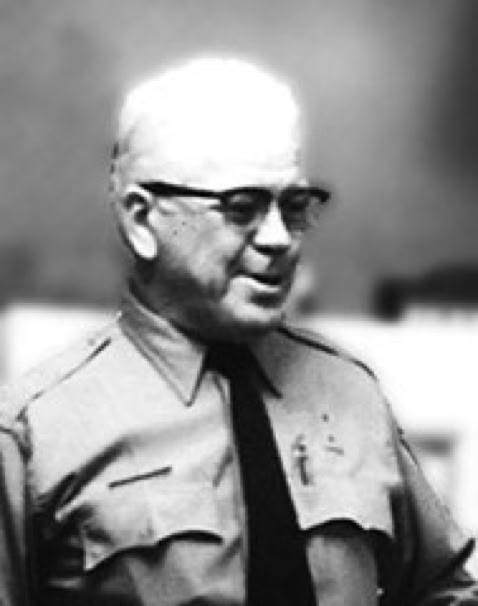
Lewis Paul Griffith
CSPRA's First President
